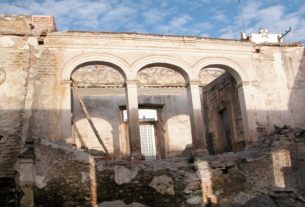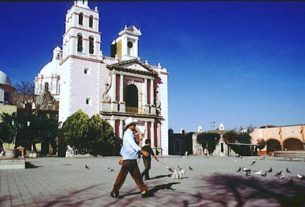Mexican History
For centuries Indians have been leaving offerings of votive bowls and clay figurines in Lake Chapala for the deities of the waters. Today the Huichol Indians of Jalisco and Nayarit continue the tradition. But their story has a peculiar twist.
One person’s mythology is another person’s religion. The Huichols have a vast store of both. Huichol stories, legends, and religious beliefs are still passed on largely by word of mouth. We are therefore often forced to rely upon free “translations” or paraphrases in Spanish, French, English and other European languages. (e-mail for references). Much of the elaborate metaphor and religious symbolism is therefore lost but enough remains to enable us to gain some understanding of the originals.
In any living religious tradition variations on the main themes develop over time. The flood story, with variations, is almost universal. The following Huichol version was recorded by the explorer and ethnographer Karl Lumholtz more than 100 years ago.
A Huichol was felling trees to clear land for planting. But every morning when he returned to work he found the trees had all grown up in place again. This happened four times in a row. On the fifth day the Huichol was determined to wait and find out what happened. Finally Great Grandmother Nakawé, the goddess of earth and the vegetation, arose and pointed in the six directions: south, north, west, and east, above and below. Then the man understood what had happened to his trees.
Nakawé told him his work was in vain because a great flood was coming in five days. She told him to make a box from a fig tree big enough for himself and a black female dog. Further he was to take with him five grains of corn of each color, five beans of each color, fire, and five squash-stems for fuel.
The man did as he was told and got inside the box. Nakawé sat on top with a macao on her shoulder. The box rode on the waters for four years in each of the cardinal directions then rose up in the fifth year when all the world was flooded.
In the sixth year the waters subsided and the box settled on a mountain near Santa Catarina. The man took off the lid of the box and saw that the world was still flooded.
But the macaos and the parrots made valleys with their beaks, the waters settled into five seas, dry land appeared, trees and grass sprang up and a new creation appeared. Nakawé became wind.
The man returned to work in his field. He lived with the dog in a cave and every day when he came back from work he found tortillas prepared for him. He wanted to know who made them, so he hid in some bushes near the cave. He saw the bitch take off her skin and hang it up. He saw that she was a woman, so he threw the skin into the fire. She was upset but the man bathed her head with a mixture of water and ground corn and so she remained a woman.
They had a large family, their sons and daughters married, and this is how the world was populated.
The story differs slightly in various Huichol communities but Lumholtz observed a special rain-making feast at the conclusion of which messengers were sent out in the four directions with votive offerings to be deposited in sacred places, one of which was the Laguna de Magdalena, about a week’s journey south of Huichol country. On an island in the lake was the sacred shrine of Las Cuevas-AtitlánFolan, the birth place of the Mother-of-Rains (rain goddess). Here the messenger set afloat an imitation of the original box, the Huichol version of the ark, in which the first Huichol was saved from the flood.
The Huichols have survived against great opposition not only because they are fiercely independent, but because they are also highly adaptable. When the Laguna de Magdalena was drained some time ago the Huichols simply transferred their shrine to Lake Chapala, where they now deposit offerings and pray to the deities of the lake. Today the Huichols make their pilgrimage to Lake Chapala because it has water and the Laguna de Magdalena does not.
A few years ago a Huichol friend of mine invited me to a curing ceremony at Canacinta, near Ajijic, conducted by two shamans from Santa Catarina. Afterwards the head shaman prayed for Lake Chapala. Holding his muvieries, the prayer arrows which enable the shaman to communicate with the gods, close to the side of his face, he chanted throughout the entire night, accompanied by his assistant. Few of us can show such devotion to our beliefs.
This article appears courtesy of the Chapala Review, a monthly Newspaper published in Ajijic, Jalisco, Mexico. The focus is the Lake Chapala area. The goal is to provide quality information about the area, its stories, events, history, culture and people.


